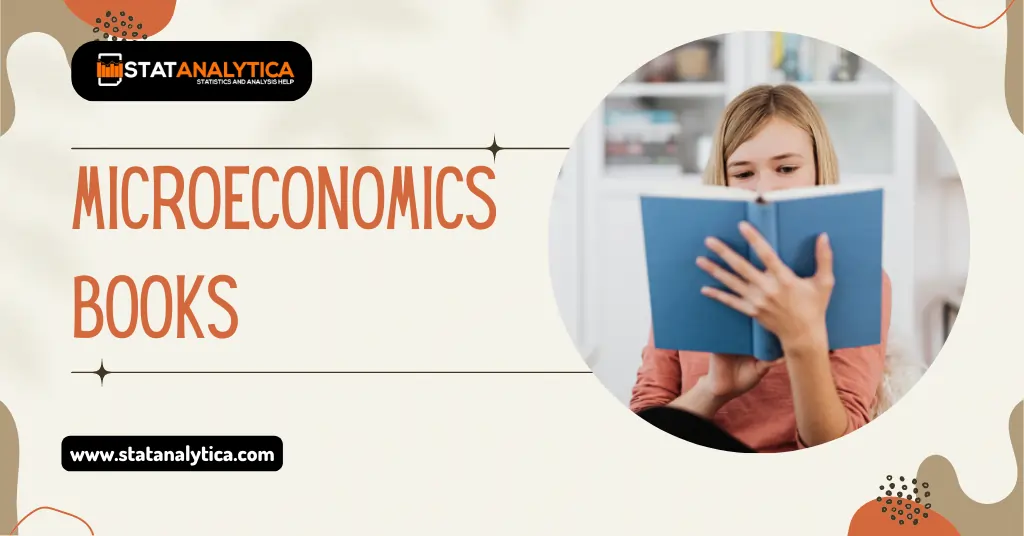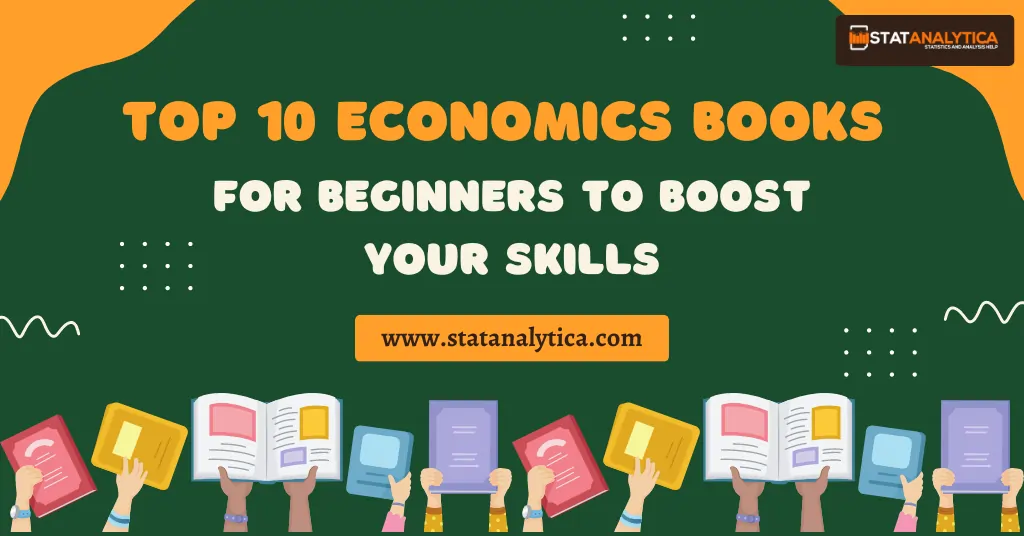Being a student is not easy, especially when you are a beginner in a new field or subject. Students have to deal with many subjects, and one of them is microeconomics. Although it’s a subpart of Economics, it has its importance.
Microeconomics plays a very vital role in understanding the world around us. Be it issues related to public policies, unemployment, or inflation, you must have at least a basic knowledge of it. And the best way to gain that knowledge is by referring to books. There are many microeconomics books available in the market that you can read to know more about this subject.
In today’s article, we will discuss some of the best microeconomics textbooks you can read in 2024. But before proceeding, it’s important to get a basic idea of what microeconomics is, its relation to Economics, and why it is necessary to study it as a separate subject.
However, if you have any pending microeconomics assignments, then you don’t have to worry about them. Here at Statanalytica.com, you can get the best microeconomics assignment help at an affordable price.
What is Microeconomics?
Table of Contents
Economics is well-divided into two parts: macroeconomics and microeconomics. Here, we discuss Microeconomics, a branch of economics that deals with the behavior of individuals. It also includes firms’ decisions to allocate resources for production and consumption.
Microeconomics helps us determine the value of different goods at different intervals of time. In simpler words, it helps us understand how our decisions affect the supply and demand of goods and services.
Most people confuse themselves with macroeconomics and microeconomics. Macroeconomics deals with economic growth whereas microeconomics deals with human behaviors. Both are different subjects and need separate studies.
Books provide the best source of information on any topic or subject and microeconomics is no exception. So, here is a list of some of the best microeconomics books you can read in 2024.
10 Best Microeconomics Books To Read In 2024
As you all know Microeconomics is a part of Economics. if you want to learn about Microeconomics then you must need some good microeconomics books. Below are the best 10 books that you must read if you want to learn about them.
1. Principles of Microeconomics
by ( N. Gregory Mankiw)
Introduction
This is the microeconomics textbook you will find in every corner of a bookshop. It is a complete package of all the fundamental rules of microeconomics. The chapters are short and very easy to understand even for school-level students.
Mankiw is a very respected economist and has written hundreds of microeconomics books. Principles of microeconomics are one of the real-life examples of his great collections.
Main features of this book
- One of the best microeconomics textbooks for undergraduate students
- Explains all the concepts, tools, and techniques in a very easy-to-understand language
- The book comes with a mind map that helps you graph building adaptive test preparation
- You can buy this book from Amazon, Audible, Flipkart, etc.
Summary of the book
This book is a must-read for students who are studying economics. It includes many examples, exercises, and case studies to help you. A small yet complete package of all the fundamental principles of microeconomics.
2. Freakonomics. A rogue economist explores the hidden side of everything
by (Steve Levitt and Stephen J. Dubner)
Introduction
The list of microeconomics books is incomplete without mentioning the name Freakonomics. Undoubtedly, one of the best microeconomics textbooks, you will come across. The book comes up with a collection of articles and theories to help you in understanding the very basic meaning of economics.
It uses various applications to explain how we can use economics in our day-to-day lives. It’s a very interesting book that tackles different questions and answers through the eyes of an economist. It contains chapters that show a relationship between economics and the daily lives of the people.
Main features of the book
- Every chapter contains case studies at the end.
- The book is written in a very informal and easy-to-understand language
- Contains interesting questions and answers such as “What is more dangerous, a pool or a gun?
- It also shows how economic methods affect our day-to-day lives.
Summary
This book is more like a microeconomics textbook that asks various questions at the end of every chapter. If you want to enjoy learning at the same time, this book is a must-read for you.
3. CoreMicroeconomics
by ( Eric Chiang)
Introduction
If you are interested in learning microeconomics, then this is the best book for you. But if you are a beginner and want to start reading microeconomics, then this is not the right book for you. Because this book is full of microeconomics concepts, in my opinion, before reading this book, pick one beginner’s book from the above list. In this book, the author, Eric Chiang, introduces a lot of new topics in microeconomics theory, which means that this book does not contain the fundamentals of microeconomics. On the other hand, this book also includes new trends, modern microeconomics ideas, and materials on how to teach them to students.
Along with students, this book can also be used by teachers who teach microeconomics. It can become a valuable resource if you have some basic knowledge of microeconomics.
Main features of the book
- This microeconomics book is over 500 pages, and everything explained is comprehensive.
- On the other hand, this book is not recommended for beginners.
- The author has extensive knowledge of teaching economics courses and has put all of his teaching experience into this book.
- You can buy this book from Audible, Flipkart, etc.
Summary
This book is totally based on the new trends and fundamentals of microeconomics. So, if you are a beginner and just started in microeconomics, then this is not the right book for you.
4. Microeconomics for today
by Irvin B. Tucker
Introduction
If you compare this with the other microeconomics textbooks, you will find many differences. The terms and theories used are a little complex in nature as compared to other books. So, this book is mostly recommended to people who are already professionals in this field.
Apart from this, it provides a list of vocab words used at the end of each chapter. If you are running a business, this book is a must-read for you.
Main features of the book
- The book comes with various resources such as CDs for instructors, PowerPoint slides, and a link to the website.
- It provides practice tests at the end of each chapter to make learning much easier
- A perfect textbook for people who are into business or launching a startup
- You can buy this book from Amazon, Audible, Flipkart, etc
Summary
A book for professionals, who are looking to step foot in the business. It has all the answers and if you have a vision, you must read this book at least once. This is one of the best books on microeconomics books.
5. Microeconomics
by Paul Krugman and Robin wells
Introduction
Again, a very good book on the fundamentals of microeconomics and covers almost every topic of it. It contains many real-life examples to help in understanding the concepts of microeconomics.
Apart from this, this book shows a relationship between microeconomics and macroeconomics. And how these two explain economics as a whole. This book is written in very easy language, free from jargon, and has made learning very easier.
Main features of the book
- It explains all the basic concepts of microeconomics in a very short and crisp manner
- It contains many examples to help you in understanding the core of this subject
- Written in very easy and simple language
- You can buy this book from Audible, Flipkart, etc.
Summary
A book for all, no matter whether you are a student or a professional, you can read this book. All the concepts and theories are explained in detailed and very easy language. Certainly, One of the best microeconomics textbooks to read in 2024.
6. Advanced Microeconomics Theory
by Felix Muñoz–Garcia
Introduction
This book provides a complete introduction to all the advanced topics of microeconomics. It provides various examples to show how we apply different theories to practice. It also provides various mathematical assumptions to explain various theoretical models of economics.
This book is best recommended to master’s and Ph.D. level students of economics, public policy, and finance. (Also check the best books for finance of this year)
Main features of the book
- It covers various topics such as preference relations, demand theory, game theory, monopoly, etc.
- It focuses more on technical topics rather than discussing the basics of microeconomics
- It drives a relationship between microeconomics and mathematics and how it helps in solving problems.
- You can get this boom from eBay, Amazon, Flipkart, www.mybooks.com
Summary
It’s a book of professionals who are already doing well in this field. As the name suggests, it explains various advanced topics of microeconomics in detail. It’s a must-read book for people who are doing research in economics.
7. Microeconomics made simple, explained in 100 pages or less
by Austin Frakt and Mike Piper
Introduction
This is a supplementary book that has explained the basic topics of microeconomics in less than 100 pages. This book is more of a guide that furnishes your already existing knowledge. The author has written this book in every informal and easy-to-understand language.
One speciality of this book is that you can read it anywhere and you will still understand the concept. You don’t need to follow a sequence, go through any page, and you will understand with ease.
The main topics covered in the book are:
- Microeconomics vs Macroeconomics
- Marginal Utility Opportunity Costs
- Demand Determinants of Demand Elasticity
- Supply Determinants of Supply Elasticity
- Monopolistic Competition
- Economic Costs vs. Accounting Costs
Summary
This book is a perfect guide for students who have chosen economics as their main subject. All the topics are well explained with real-life examples to help you. Undoubtedly, one of the best microeconomics textbooks to read in 2024.
8. Microeconomic Theory
by Andreu Mas-Colell, Michael D. Whinston, and Jerry R. Green
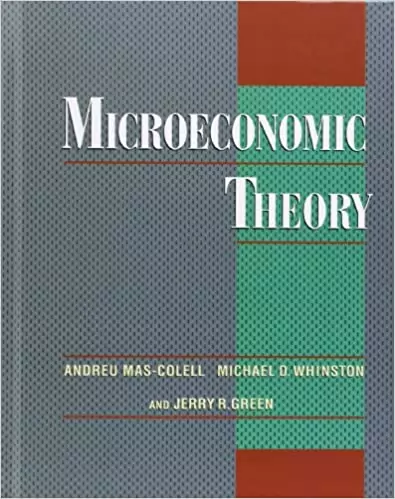
Introduction
If you have heard the term “old is gold,” this book perfectly fits that proverb. Microeconomic Theory is the guide to microeconomics, which means you should not start with this book if you are a beginner in microeconomics. Before reading this book, read the above-mentioned book, which is beginner-friendly. And then you can start reading this book. You might wonder why I’m saying this because this book is so intense in explaining concepts. If you are a beginner, they will not make sense to you. At some point, this book is used at the University of Michigan for a full year to teach Ph.D. students microeconomic theory.
You might be wrong if you think this book instantly teaches me everything. This book slowly teaches you the concepts and fundamentals of microeconomics.
Main features of the book
- You can’t skip this book if you are an economics student. This microeconomic book is a must for you.
- This book is divided into five sections: individual decision–making, game theory, partial equilibrium analysis, general equilibrium analysis, and social choice theory and mechanism design.
- If you read all five sections, you will have a great knowledge of microeconomics.
- You can buy this book from Audible, Flipkart, etc.
Summary
This book is for those people who have extensive knowledge of microeconomics. Not recommended for beginners.
9. Modern Principles: Microeconomics
by Tyler Cowen and Alex Tabarrok
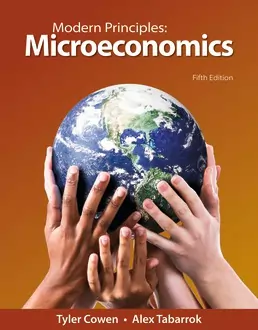
Introduction
This is another great book for understanding microeconomics. If you are a person who likes visual learning, then this is the perfect book for you. Because in this book, the author has used visuals so that a subject like microeconomics stands out as one of the most interesting. So don’t waste any time; grab this book and know how well the visuals and texts look. This book is for you if you are a new student and have just started your microeconomics course. In simpler words, this book is pretty good for beginners. This book has many features besides visuals, and text like this book comes with easy-to-understand chapters so that you do not need to go back and forth to learn a particular topic.
You can easily follow along and learn the basic concepts, fundamentals, and insights. For better understanding, you will also get many real-life examples in this book that are most relatable to the real world.
Main features of the book
- The authors of this book are well-known online teachers of economics.
- This microeconomic book is great for visual learners.
- It contains many examples mostly related to the real world, which gives you a better understanding of topics.
- It is written in a very easy and simple language.
Summary
A book for all, no matter whether you are a student or a teacher, you can read this book. All the concepts and theories are explained in detail with visuals. It is one of the best books for microeconomic students.
10. Microeconomics: Principles, Problems, & Policies (McGraw-Hill Series in Economics)
by Campbell McConnell, Stanley Brue, and Sean Flynn
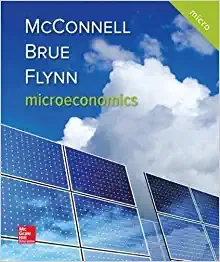
Introduction
This book is perfect for students for a long time. If you ever need to read a book for a class, this book is the best choice. Because this book is arranged in such a manner, you don’t need another textbook for the class. On the other hand, this book consists of 20 chapters, including a chapter called “behavioral economics.” There are not many books available on the market that include behavioral economics. As a result, this book helps students think about microeconomics in a completely different way. This book is not only good for students; it is also good for teachers. You can also read this book to grasp microeconomics concepts in a very short time. If you are a business owner, this is the book you want.
Main features of the book
- One of the best microeconomics books for students.
- On the other hand, the book’s content can also be used for teaching purposes.
- The perfect textbook for business owners.
- You can buy this book from Amazon, Audible, Flipkart, etc.
Summary
This book is useful for students and teachers. It is a one-step solution for all your microeconomics problems.
How Do I Start Learning Microeconomics for Beginners?
Learning microeconomics for beginners involves understanding basic economic principles such as supply and demand, market structures, and consumer behavior. Here are some steps you can follow to start learning microeconomics as a beginner:
- Start with the basics: Begin by reading an introductory microeconomics textbook to gain a basic understanding of the subject. You can also watch online lectures and tutorials to boost your learning.
- Understand the concepts: Take time to understand the fundamental microeconomics concepts, such as scarcity, opportunity cost, and trade-offs. Make sure that you also understand the different market structures and their characteristics, including perfect competition, monopoly, monopolistic competition, and oligopoly.
- Apply the concepts: Practice applying them to real-life situations once you understand them. For example, analyze how a price change affects a product’s demand and supply.
- Study graphs: Graphs are a critical component of microeconomics; you must be comfortable reading and interpreting them. Pay attention to the axes, the slope, and the intercepts.
- Practice problem-solving: Solving problems is essential in mastering microeconomics. Practice working through different problems to enhance your problem-solving skills.
- Seek help: Don’t hesitate to seek help from a tutor or an instructor if you have difficulty understanding a concept. On the other hand, if you are looking for a Microeconomics assignment expert, you can contact us any time you want.
- Stay up-to-date: Finally, keep up with the latest developments in microeconomics by following current events and reading articles and journals. This will help you apply the concepts you’ve learned to real-world situations.
Conclusion
Economics is something that is applied in our day-to-day lives with microeconomics being a crucial part of it. Microeconomics is not rocket science but it also requires knowledge and understanding. If you want to master this subject, your basics should be very strong because that is what microeconomics is all about.
All the above-mentioned microeconomics books are worth reading and highly useful. Once you get the idea about the basics, you can go for the advanced books provided in the above list. Read all these books and decide what suits you the best. If you have any problems related to microeconomics then you can take microeconomics homework help.
Frequently Asked Questions
Q1. What is the difference between Microeconomics and Macroeconomics?
Microeconomics is a process that studies how individuals and companies make decisions. These decisions mainly include the allocation of scarce resources. Whereas macroeconomics studies the economy as a whole.
Q2. Who is the father of economics?
Adam Smith is the father of economics. He was an 18th-century Scottish Philosopher and author who is considered the father of modern economics.
Q3. Is microeconomics hard to study?
Whether or not microeconomics is hard to study depends on the individual’s background, interests, and aptitude. Some people find microeconomics relatively easy because they are naturally inclined toward analyzing individual economic decisions and behaviors. Others may find it challenging due to the abstract nature of the subject, the use of mathematical models, or the complexity of economic concepts and theories.
